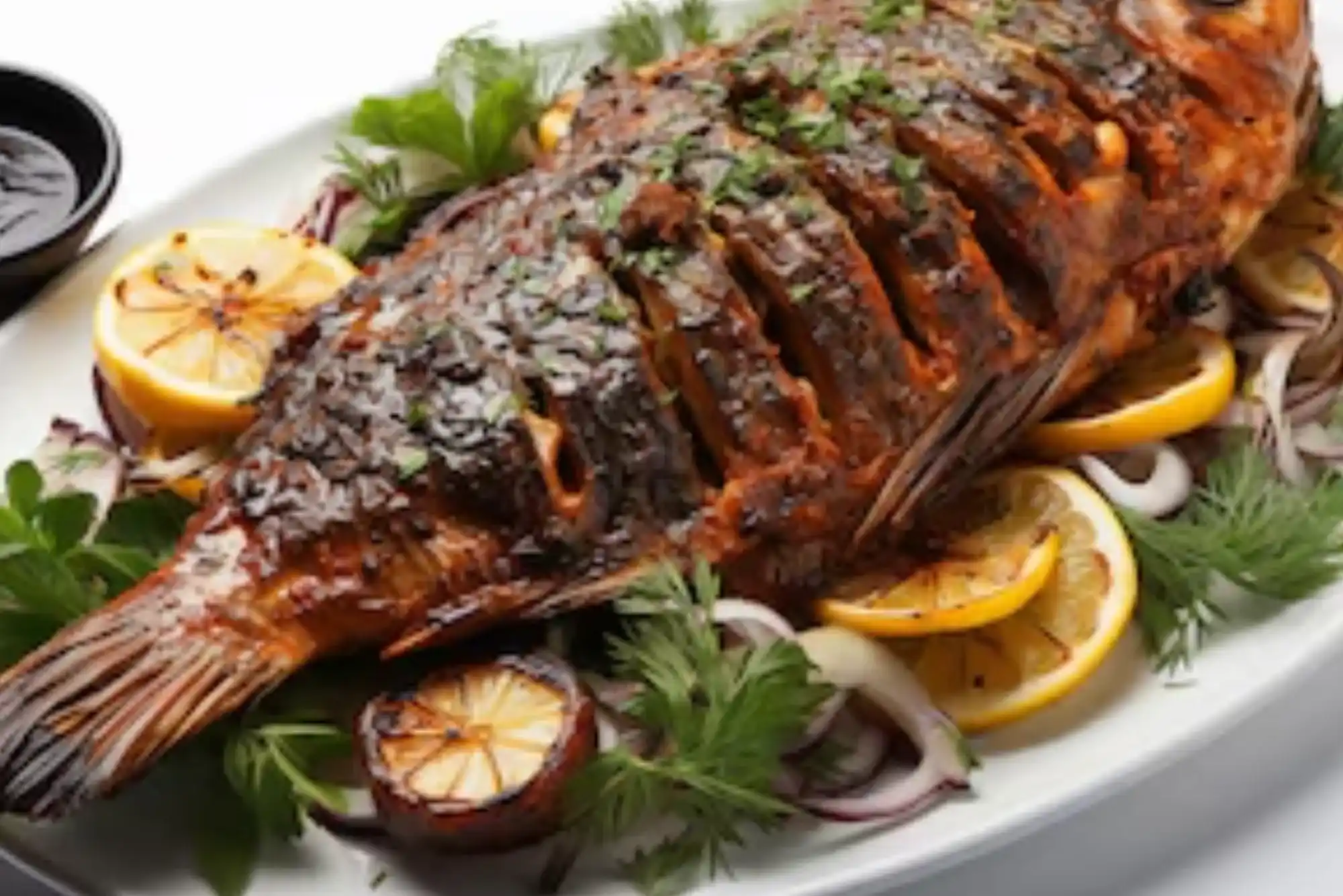The hamour, often referred to as the “king of UAE seafood,” is more than just a delicacy—it’s a symbol of culture, heritage, and health in the Emirates. From Abu Dhabi’s coastal markets to Dubai’s luxury restaurants, this prized fish remains a staple in Emirati diets. Beyond its taste, the hamour fish benefits are gaining attention among nutritionists, food technologists, and policymakers. According to UAE health data, fish consumption in the Emirates is steadily rising, partly driven by campaigns promoting healthier lifestyles. In this article, we’ll explore why hamour is trending now, and how initiatives like Episode are making waves by educating communities about nutrition, sustainability, and culture.
Nutritional Value of Hamour Fish
Quick Answer: Hamour fish is packed with lean protein, vitamins, and omega-3 fatty acids essential for heart and brain health.
Hamour provides:
-
High-quality protein for muscle repair and growth.
-
Omega-3 fatty acids that reduce cardiovascular risks.
-
Vitamin D and calcium for stronger bones.
-
Selenium, a powerful antioxidant.
Nutritionists in Dubai highlight that just 100 grams of hamour supplies over 40% of daily protein needs with minimal fat content. For UAE families seeking healthier meals, it’s an easy choice.
Cultural Importance in the UAE
Quick Answer: Hamour is deeply tied to Emirati heritage and traditional cuisine.
For centuries, fishermen along the Arabian Gulf—especially in Fujairah and Ras Al Khaimah—relied on hamour as a key livelihood. Traditional dishes like “Samak Mashwi” (grilled fish) and “Majboos Samak” often use hamour as the main ingredient. Cultural festivals, including the Sharjah Food Festival, regularly feature hamour-based delicacies, reinforcing its symbolic status.
This cultural continuity ensures hamour is not just food, but a story passed across generations.
Economic Impact of Hamour Trade
Quick Answer: Hamour contributes significantly to UAE’s seafood economy and food security.
According to the UAE Ministry of Climate Change and Environment (MOCCAE), fish and aquaculture industries contribute billions to the regional economy annually. In 2023, aquaculture production of local species, including hamour, grew by nearly 10%.
Local entrepreneurs in Ajman and Umm Al Quwain are now investing in aquaculture farms, ensuring year-round availability while reducing imports. This economic activity supports both local jobs and sustainable growth.
Sustainability and Conservation Efforts
Quick Answer: Overfishing once threatened hamour stocks, but UAE-led programs are restoring balance.
The UAE government has launched:
-
Hamour Release Programs: Stocking hatchery-grown hamour into coastal waters.
-
Fishing Quotas & Size Limits: Protecting juvenile fish.
-
Research Grants via Ignite & STZA: Supporting AI-driven tracking of fish migration.
As Dr. Saeed Al Mansoori, a marine biologist in Abu Dhabi, notes:
“Hamour conservation isn’t just about ecology—it’s about preserving our food security and culture for future generations.”
These measures highlight UAE’s leadership in balancing tradition with sustainability.
Health Benefits for UAE Residents
Quick Answer: Eating hamour regularly promotes heart, brain, and bone health.
Key health benefits include:
-
Lower risk of chronic diseases due to omega-3.
-
Improved cognitive performance in children.
-
Bone-strengthening minerals ideal for aging populations.
-
Low calorie and high protein content for weight management.
Fitness trainers in Dubai Marina often recommend hamour as a lean protein alternative for gym-goers, making it a modern health trend.
Hamour in Modern Emirati Cuisine
Quick Answer: Chefs across UAE are reinventing hamour in global recipes.
While grilled hamour remains a classic, restaurants in Dubai and Sharjah are experimenting with:
-
Hamour sushi rolls.
-
Fusion dishes like hamour tacos.
-
Pan-seared hamour with saffron sauce.
Michelin-recognized restaurants at Dubai Creek are bringing hamour to the international stage, making it appealing to both locals and tourists.
UAE Episode on Hamour Awareness
Quick Answer: UAE Episode highlights the hamour story through awareness and education campaigns.
UAE Episode has become a trusted platform for spreading authentic knowledge on local food culture, including hamour. By publishing guides, case studies, and practical insights, it educates UAE residents and tourists on nutrition and sustainability.
In partnership with youth training initiatives in Dubai Knowledge Park, UAE Episode also runs content series that encourage young Emiratis to value traditional foods while adopting modern lifestyles.
Technology in Hamour Aquaculture
Quick Answer: AI and IoT are improving hamour farming efficiency in UAE.
The UAE’s aquaculture sector is leveraging:
-
Smart sensors to monitor water quality.
-
AI-based feeding systems that reduce waste.
-
Blockchain for transparent seafood supply chains.
Backed by government-funded programs like Ignite, startups are developing sustainable models that ensure hamour remains widely available without depleting natural reserves.
Regional Demand and Market Trends
Quick Answer: Hamour demand is rising across UAE cities, driven by health and culinary appeal.
-
Dubai: Hamour dominates fine dining menus.
-
Sharjah: Families buy hamour weekly from fresh markets.
-
Abu Dhabi: Aquaculture farms scale up supply for urban demand.
-
Fujairah & RAK: Traditional fishing still thrives.
A 2024 survey by MOCCAE revealed that 68% of UAE residents prefer hamour over imported fish, citing freshness and cultural connection.
Future of Hamour in UAE
Quick Answer: Sustainable aquaculture and awareness platforms will secure hamour’s place in UAE’s future.
The UAE Centennial 2071 vision emphasizes sustainability, and hamour plays a small but symbolic role in achieving this. With aquaculture farms, public-private partnerships, and educational outreach through platforms like Hamour Fish Benefits, the future looks promising.
Experts believe that if current conservation strategies continue, the hamour will remain not just a delicacy but a healthy, sustainable staple for generations.
FAQs
1. Is hamour fish safe to eat daily?
Yes, hamour is lean and nutritious, but moderation is advised due to possible mercury levels.
2. Why is hamour so popular in UAE?
It’s prized for its mild taste, cultural heritage, and availability in Emirati cuisine.
3. How is UAE making hamour farming sustainable?
By using aquaculture technology, AI monitoring, and hatchery programs.
4. What are the best ways to cook hamour?
Grilling, steaming, and pan-searing are most popular for preserving nutrients.
5. Is hamour expensive compared to other fish in UAE?
Yes, it’s premium-priced due to demand and conservation efforts, but aquaculture is helping stabilize costs.
6. Does hamour have health benefits for children?
Yes, its omega-3s support brain development and growth.
7. Can tourists find hamour in UAE restaurants?
Absolutely—hamour is featured in most top Emirati and fusion restaurants.
Final Thought
As someone closely observing UAE’s food-tech transformation, I believe hamour is a perfect example of how heritage and modern innovation can coexist. Platforms like UAE Episode ensure residents don’t just consume fish—they understand its value to Health, Culture, and sustainability. With government-backed programs and youth-focused initiatives, hamour is poised to remain a cornerstone of UAE’s culinary and economic future.




